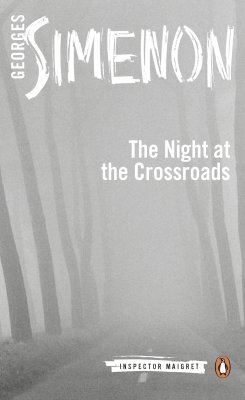Reviewed by Lizzy Siddal
Let me start this article with a confession. In my pre-blog years, I once read a Maigret novel. I didn’t like it much. I found it slight and not even that puzzling. So how come 10+ years later, I find myself reviewing not one but three Maigrets? In the intervening 1000 reads or so, I have become addicted to Simenon’s romans durs (psychological novels). There are only so many of those (translated into English) and I feel it would be foolish to write off an entire series of 75 novels, on the basis of perhaps one dud.

Plus, Penguin Classics are publishing, at the rate of one novel per month, the entire series of Maigrets. This is the first time that the whole series will appear in the same English imprint and the publishing rate means it will be easy to keep up with the pace. Also special is the fact that all the translations are new and by different translators. The names in the frame for this quarter’s batch are those of three award-winners: Linda Coverdale, Siân Reynolds, and David Coward. Remarkable then that you can’t detect a difference in voice between the three.
The reason for this lies in Simenon’s style. He edited his works to remove anything literary. “Adjectives, adverbs and every word which is there just to make an effect. Every sentence which is there just for the sentence. You know, you have a beautiful sentence – cut it.” (1). He famously worked with a vocabulary of just 2000 words. He wanted his public to read, not to be consulting dictionaries; the end result: a series of non-literary detective novels to be enjoyed. His Maigret series may have failed to win him the Nobel Prize prize, but they did win him fame, fortune and a legion of loyal readers. So don’t expect metaphors and similes, expect a context which is usually concrete by the end of the first chapter. All three novels are around 150 pages long, leaving no room for bloat. Take for example, the opening paragraph of Night at The Crossroads:
Detective Chief Inspector Maigret was sitting with his elbows on the desk, and he pushed his chair back with a tired sigh, the interrogation of Carl Andersen had been going on for exactly seventeen hours.

Time, manner and place established in 35 words. Just because it’s spare, doesn’t mean it’s not specific, and Simenon rings the changes location-wise. Night at the Crossroads is set – you guessed it – at an isolated crossroads on the outskirts of Paris. The title of a Crime in Holland tells you all you need to know and the crime in The Grand Banks Café takes places on a trawler in the fishing grounds far out to sea. All three novels were published in 1931 and are firmly set in the world of yesterday complete with classic crime writing tropes: false identities, cherchez la femme, a Poirotesque gathering of the key suspects to re-enact the crime. The plots are not complicated – hence, so few details in this piece – but working my way through the series, I’m beginning to understand what makes other authors eulogise.
There’s the detective himself: a bulky pipe-smoking presence who could impose himself on every situation but frequently chooses not to. In an age before technology did the crime-solving, Maigret is methodical. No elementary, my dear Watson flashiness about him. Simenon said that “Maigret cannot go inside a character“. He watches and waits until mistakes are made or his suspicions are validated. He has to understand, and he sometimes sympathises with the predicaments of the criminals. His dedication to justice, not necessarily the law, makes him act in ways that are totally unexpected. He also has a secret weapon ….

Unlike the typical contemporary fictional detective, divorced and alone, Maigret is married. Due to the lack of an omniscient narrator, I’m unsure at this stage whether happily or not. Everything is seen from Maigret’s viewpoint, and he doesn’t talk about his marriage. So all I can say on the evidence to date is that Madame Maigret, whom Muriel Spark called her favourite fictional character, is a saint. She appears in cameo, sometimes a perfunctory one, in every novel. In A Night At The Crossroads her only role is to pack a suitcase for her husband before he departs on his foreign assignment. I’m happy to report that her role in The Grand Banks Café is more substantial. After her holiday is relocated to Normandy so that Maigret can continue his investigation on the sly, she finds herself more often than not with only the fiancée of the prime suspect for company …. and not a word of complaint! I suspect that without her, Maigret would cease to function.
Each of these novels can be read as a stand-alone, but I’m finding my pleasure in the novels that Simenon compared to the “sketches an artist makes for the pleasure of his friends” increasing as I read the series in original publication sequence. I’m already feeling confident that I will even enjoy that first foray into Maigret’s world when I come to reread it.
(1) All quotes from Simenon are from his interview for the Paris Review (1955)

Lizzy Siddal blogs at Lizzy’s Literary Life
- Night at the Crossroads: Inspector Maigret #6 transl. Linda Coverdale
- A Crime in Holland: Inspector Maigret #7 transl. Sian Reynolds
- The Grand Banks Café: Inspector Maigret #8 transl. David Coward
